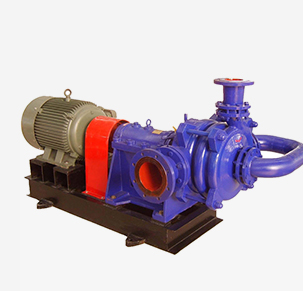English
- Afrikaans
- Albanian
- Amharic
- Arabic
- Armenian
- Azerbaijani
- Basque
- Belarusian
- Bengali
- Bosnian
- Bulgarian
- Catalan
- Cebuano
- Corsican
- Croatian
- Czech
- Danish
- Dutch
- English
- Esperanto
- Estonian
- Finnish
- French
- Frisian
- Galician
- Georgian
- German
- Greek
- Gujarati
- Haitian Creole
- hausa
- hawaiian
- Hebrew
- Hindi
- Miao
- Hungarian
- Icelandic
- igbo
- Indonesian
- irish
- Italian
- Japanese
- Javanese
- Kannada
- kazakh
- Khmer
- Rwandese
- Korean
- Kurdish
- Kyrgyz
- Lao
- Latin
- Latvian
- Lithuanian
- Luxembourgish
- Macedonian
- Malgashi
- Malay
- Malayalam
- Maltese
- Maori
- Marathi
- Mongolian
- Myanmar
- Nepali
- Norwegian
- Norwegian
- Occitan
- Pashto
- Persian
- Polish
- Portuguese
- Punjabi
- Romanian
- Russian
- Samoan
- Scottish Gaelic
- Serbian
- Sesotho
- Shona
- Sindhi
- Sinhala
- Slovak
- Slovenian
- Somali
- Spanish
- Sundanese
- Swahili
- Swedish
- Tagalog
- Tajik
- Tamil
- Tatar
- Telugu
- Thai
- Turkish
- Turkmen
- Ukrainian
- Urdu
- Uighur
- Uzbek
- Vietnamese
- Welsh
- Bantu
- Yiddish
- Yoruba
- Zulu
Telephone: +86 13120555503
Email: frank@cypump.com
Dec . 06, 2024 00:46 Back to list
Optimizing Slurry Recirculation Pump Performance for Enhanced Efficiency and Reliability
Understanding Slurry Recirculation Pumps Importance and Applications
Slurry recirculation pumps play a crucial role in various industries, especially in processes that involve the handling of slurries—thick, viscous mixtures of liquid and solid particles. These pumps are specifically designed to transport such challenging mixtures efficiently and reliably. In this article, we will explore the significance, features, and applications of slurry recirculation pumps, as well as the benefits they provide to specific industrial processes.
What is a Slurry?
Before diving into the specifics of slurry recirculation pumps, it is essential to understand what comprises a slurry. A slurry can be defined as a semi-liquid mixture containing solid particles suspended in a liquid. Common examples include mixtures in mining operations, wastewater treatment, and various manufacturing processes. The characteristics of slurries, such as solid concentration, viscosity, and particle size distribution, can vary widely, posing unique challenges for transportation and processing.
The Role of Slurry Recirculation Pumps
Slurry recirculation pumps are designed to efficiently handle these mixtures, allowing for continuous movement and processing. These pumps are engineered to manage the abrasive nature of slurry contents, which often contain hard particles that can cause wear and tear on conventional pumps. As such, they are constructed from durable materials, capable of withstanding wear while maintaining optimal performance.
One of the primary roles of a slurry recirculation pump is to move the slurry from one location to another within a processing system. This transfer is critical in processes such as mineral extraction, where the slurry must be transported from the mining site to the processing plant. Additionally, these pumps facilitate the recirculation of the slurry back into the process, ensuring that valuable materials are not wasted and promoting efficient resource use.
Key Features of Slurry Recirculation Pumps
1. Durable Construction Slurry recirculation pumps are built from robust materials such as high-chrome alloy, rubber-lined steel, or other abrasion-resistant compounds to withstand the wear caused by solid particles in the slurry.
2. High Viscosity Handling These pumps are engineered to manage slurries with varying viscosities. They feature specialized impeller designs that create high flow rates, ensuring effective transportation of denser mixtures.
4. Sealing Technologies Adequate sealing mechanisms are crucial to prevent leakage and maintain efficiency. Many pumps utilize mechanical seals designed specifically for slurry applications.
slurry recirculation pump

5. Versatility These pumps can be tailored to suit a variety of industrial processes, from mining and mineral processing to chemical manufacturing and wastewater treatment.
Applications of Slurry Recirculation Pumps
Slurry recirculation pumps find their applications in numerous industries, including
- Mining and Mineral Processing Transporting slurries of minerals and ores during extraction, washing, and processing stages. - Construction Moving cement slurries and other construction materials. - Wastewater Treatment Handling and transporting sludge and other waste slurries during treatment processes. - Chemical Manufacturing Assisting in the mixing and transportation of various raw materials and byproducts in the production process.
Benefits of Using Slurry Recirculation Pumps
The implementation of slurry recirculation pumps brings about several advantages
1. Increased Efficiency By enabling continuous movement of slurries, these pumps enhance processing efficiency, reducing downtime.
2. Cost Savings Effective handling minimizes material wastage and operational costs associated with maintenance and repairs due to equipment failure.
3. Environmental Protection Efficient recirculation can lower the environmental impact of industrial operations by minimizing the discharge of untreated slurries.
4. Improved Safety Choosing the right pump for slurry applications can mitigate hazards associated with leaks or spills, thereby enhancing workplace safety.
Conclusion
Slurry recirculation pumps are integral to industries dealing with viscous mixtures of solids and liquids. Their specially engineered features allow for safe, efficient, and reliable transportation of slurries, making them indispensable in various applications. As industries continue to evolve, the demand for advanced slurry handling solutions will likely grow, underscoring the need for continued innovation in the design and functionality of slurry recirculation pumps.
-
ISG Series Vertical Pipeline Pump - Chi Yuan Pumps Co., LTD.
NewsJul.30,2025
-
ISG Series Vertical Pipeline Pump - Chi Yuan Pumps Co., LTD.|energy-efficient fluid handling&industrial durability
NewsJul.30,2025
-
ISG Series Vertical Pipeline Pump - Chi Yuan Pumps | Advanced Engineering&Industrial Efficiency
NewsJul.30,2025
-
ISG Series Pipeline Pump - Chi Yuan Pumps | High Efficiency, Energy Saving
NewsJul.30,2025
-
ISG Series Vertical Pipeline Pump-Chi Yuan Pumps|High Efficiency&Reliable Performance
NewsJul.29,2025
-
ISG Series Vertical Pipeline Pump|High Efficiency&Low Noise
NewsJul.29,2025










